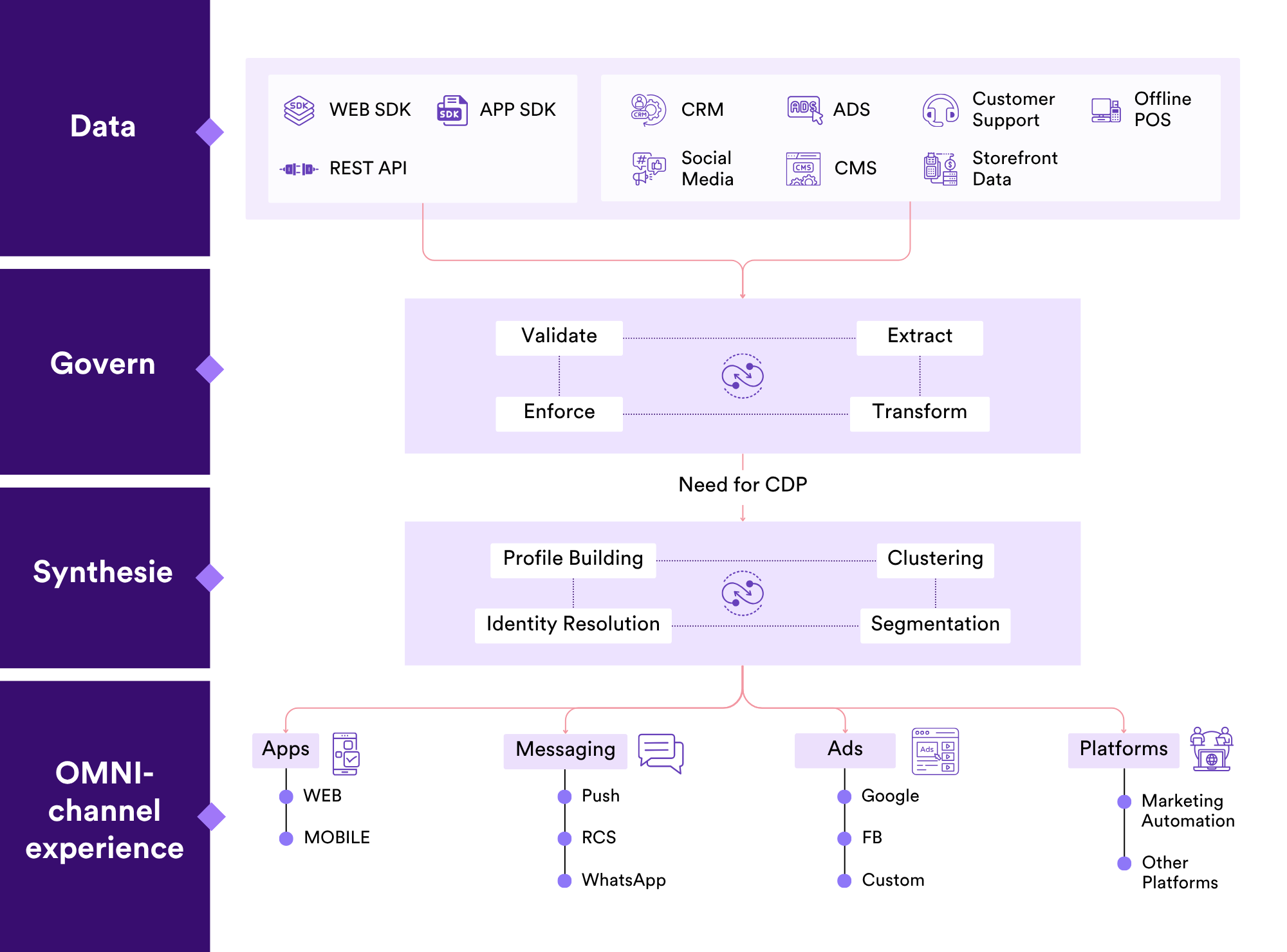Deploy a composable CDP that fits your stack
Customized CDP, analytics, and integrations powered by open-source technologies. Built to fit your stack and support real-time engagement across every channel.
Customized CDP, analytics, and integrations powered by open-source technologies. Built to fit your stack and support real-time engagement across every channel.
1. Launch faster with modular architecture that adapts to your tools and workflows
2. Cut costs using open-source components deployed directly in your own cloud
3. Keep profiles current with real-time data updates across all systems and channels
4. Power AI, analytics, and personalization with structured, model-ready customer data
Customer data lives across CRMs, storefronts, support tools, and marketing systems. A CDP brings this information together, applies structure and governance, and turns it into real-time signals teams can act on. Without it, profiles stay fragmented and engagement stays reactive. That’s why Simform built Data360: a composable CDP framework designed to fit your existing tools, rules, and workflows. It helps teams unify, govern, and activate customer data with faster setup time, lower platform costs, and full control over how data flows across systems.
Deploy only what’s needed: ingestion, governance, synthesis, or activation. Avoid rewriting workflows or introducing platform dependencies.
Connect records across systems like CRM, commerce, support, and analytics into structured, validated profiles that refresh as new data arrives.
Behavioral triggers and customer segments update instantly. This enables timely engagement across channels without manual syncing or batch delays.
Runs entirely in your infrastructure using open-source tools. There are no license markups, usage-based pricing, or bundled software constraints.
Delivers structured data including profiles, segments, and event streams that are ready for predictive analytics and GenAI personalization without extra rework.
Gain full visibility and control across the data lifecycle. Configure how data is collected, validated, merged, and sent downstream.
With Data360, you don’t adapt to someone else’s logic-you define your own. From ingestion to profile creation, every step in the pipeline is fully configurable. The govern layer lets you set the rules for how incoming data is validated, extracted, transformed, and enforced before it’s ever used. Whether you’re building strict quality filters or designing flexible pipelines, your team stays in control of how data is structured and trusted.
Once governed, the data moves into the synthesis layer where you control how customer profiles are built. This includes defining clustering logic, identity resolution rules, and segmentation criteria to match your goals. The result is a continuously updated system that produces clean, usable profiles aligned to how your teams engage and personalize. Combined with modular components, open-source tools, and AI-ready outputs, this framework forms the core of a tailored, cost-effective CDP.

When customer data is structured, governed, and updated in real time, it stops being just infrastructure-it becomes a growth engine. The use cases below show how teams apply that foundation to drive conversion, reduce churn, and personalize engagement across every channel and system.
Deliver consistent, personalized experiences across ads, emails, mobile apps, and in-store touchpoints. Profiles and preferences stay current, so every message lands with the right context and timing.
Use model-ready data to forecast churn, LTV, and next-best actions. Teams can prioritize high-risk or high-value segments and take action based on behavior, not assumptions.
Build high-intent audiences from actions like product views, cart drops, or repeat visits. Sync these segments to your ad platforms to run smarter acquisition and retention campaigns.
Link digital activity with offline purchases, visits, or support interactions. This ensures complete customer visibility across every touchpoint and improves how teams coordinate across channels.
Run real-time tests, overlays, and incentives using live customer context. Design, content, and offers adjust dynamically based on current behavior and long-term preferences.
Expose unified customer profiles to internal systems like CRM, support tools, and analytics dashboards. With live API access, every team works from the same real-time source of truth.
 Hiren Dhaduk
Hiren Dhaduk
Creating a tech product roadmap and building scalable apps for your organization.